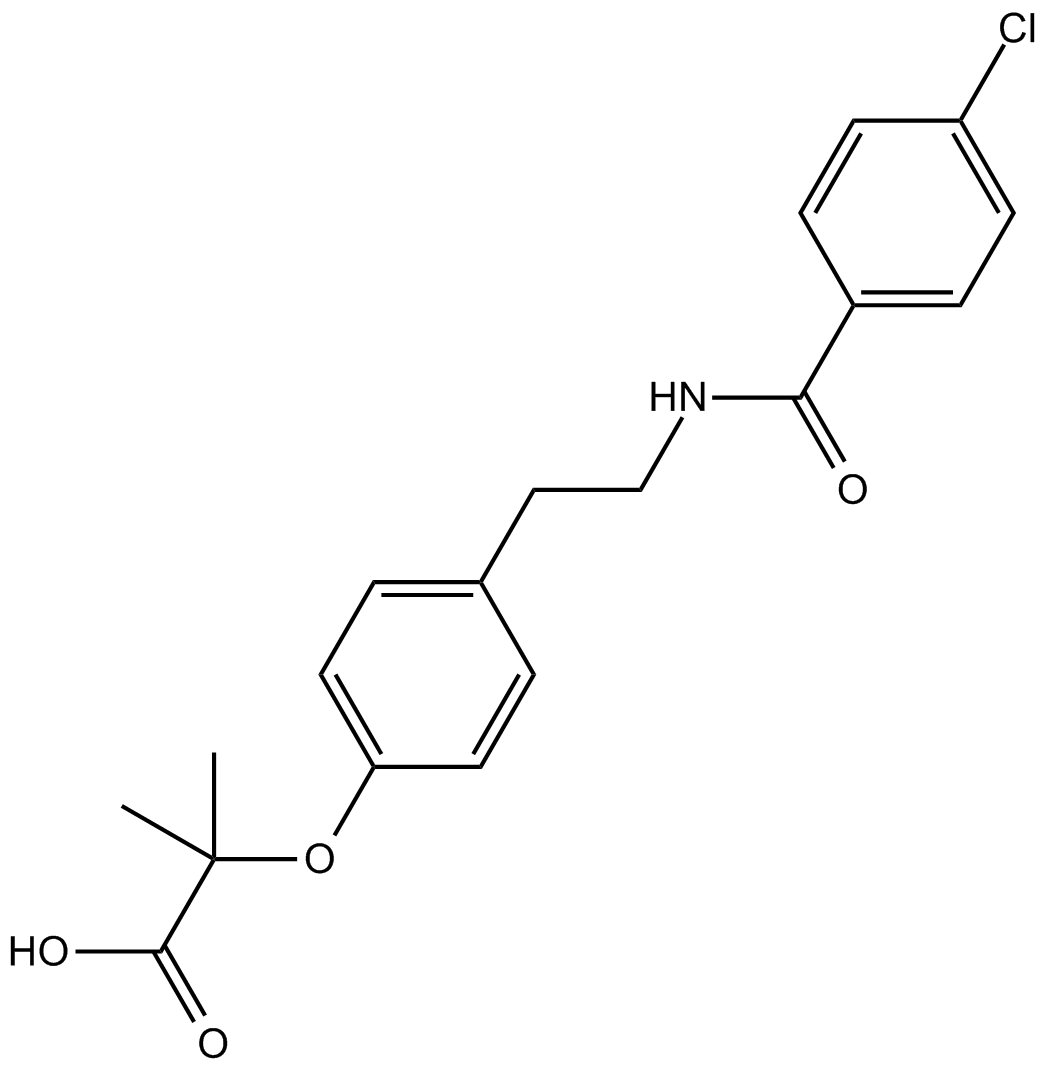This product is for research use only, not for human use. We do not sell to patients.

| Size | Price | Stock |
|---|---|---|
| 10g | $450 | Check With Us |
| 25g | $850 | Check With Us |
| 50g | $1275 | Check With Us |
Cat #: V0836 CAS #: 41859-67-0 Purity ≥ 99%
Description: Bezafibrate (BM 15075; BM-15075; Benzofibrate; BM15075; Bezalip; Bezatrol; Difaterol; Cedur; Bezafibratum) is an anti-hypertriglyceridemic/lipid-lowering drug acting.
References: Willson TM, et al. The PPARs: from orphan receptors to drug discovery. J Med Chem. 2000 Feb 24;43(4):527-50.
Publications Citing InvivoChem Products
Product Promise

- Physicochemical and Storage Information
- Protocol
- Related Biological Data
- Stock Solution Preparation
- Quality Control Documentation
| Molecular Weight (MW) | 361.82 |
|---|---|
| Molecular Formula | C19H20ClNO4 |
| CAS No. | 41859-67-0 |
| Storage | -20℃ for 3 years in powder formr |
| -80℃ for 2 years in solvent | |
| Solubility In Vitro | DMSO: 72 mg/mL (199.0 mM)r |
| Water: <1 mg/mLr | |
| Ethanol: 18 mg/mL (49.7 mM) | |
| SMILES Code | ClC1=CC=C(C(NCCC2=CC=C(OC(C)(C)C(O)=O)C=C2)=O)C=C1 |
| Synonyms | BM 15075; BM-15075; Bezafibrate; BM15075; Benzofibrate; Bezalip; Bezatrol; Difaterol; Cedur; Bezafibratum |
| Protocol | In Vitro | Bezafibrate is an agonist of PPAR, with EC50s of 90 μM, 55 μM, 110 μM for murine PPARα, PPARγ and PPARδ, and 50 μM, 60 μM, 20 μM for human PPARα, PPARγ and PPARδ, respectively. |
|---|---|---|
| In Vivo | Bezafibrate (0.5%) markedly reduces plasma lipid and glucose levels, and increases islet area in the pancreas in TallyHo mice. Bezafibrate also improves energy expenditure and metabolic flexibility. Moreover, Bezafibrate ameliorates steatosis, modifies lipid composition and increases mitochondrial mass in the liver. |
| Solvent volume to be added | Mass (the weight of a compound) | |||
|---|---|---|---|---|
| Mother liquor concentration | 1mg | 5mg | 10mg | 20mg |
| 1mM | 2.7638 mL | 13.8190 mL | 27.6381 mL | 55.2761 mL |
| 5mM | 0.5528 mL | 2.7638 mL | 5.5276 mL | 11.0552 mL |
| 10mM | 0.2764 mL | 1.3819 mL | 2.7638 mL | 5.5276 mL |
| 20mM | 0.1382 mL | 0.6910 mL | 1.3819 mL | 2.7638 mL |
This equation is commonly abbreviated as: C1 V1 = C2 V2
- (1) Please be sure that the solution is clear before the addition of next solvent. Dissolution methods like vortex, ultrasound or warming and heat may be used to aid dissolving.
- (2) Be sure to add the solvent(s) in order.




































